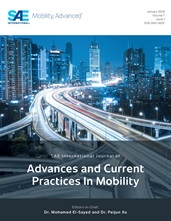World Championship races are the competition of the fastest motorcycle riders in
the world. They are a rare selection of professionals which can ride race bikes
on the absolute physical limits in the longitudinal and lateral direction. The
exact understanding of race bike performance for race engineers, riders and race
bike development companies is quite difficult as the movement of a race bike and
a rider is a complex combination of various physical effects. The aim of the
present work is to approach the understanding of race bike performance from a
scientific point of view. The actual assessment of race bike performance is
mainly data-driven and based on the comparison of racing lines and single
measurement channels for different laps and race events. The new approach is to
add physical multibody models to understand single segments from real-world
racetrack measurements. The multibody model covers all main influences on the
race bike performance like inertial forces, gyroscopic forces, apparent forces,
aerodynamic forces and tire forces. The movement of the rider and the
aerodynamic forces and moments are represented by a new approach. The
Aerodynamic-Inertia-Mass, hereinafter called AIM covers these effects in one
mode. The AIM model methodology is shown for a concrete racetrack scenario from
a Moto2 world championship race.
For reasons of confidentiality the name of the rider or the racebike brand is not
mentioned within the present work.
